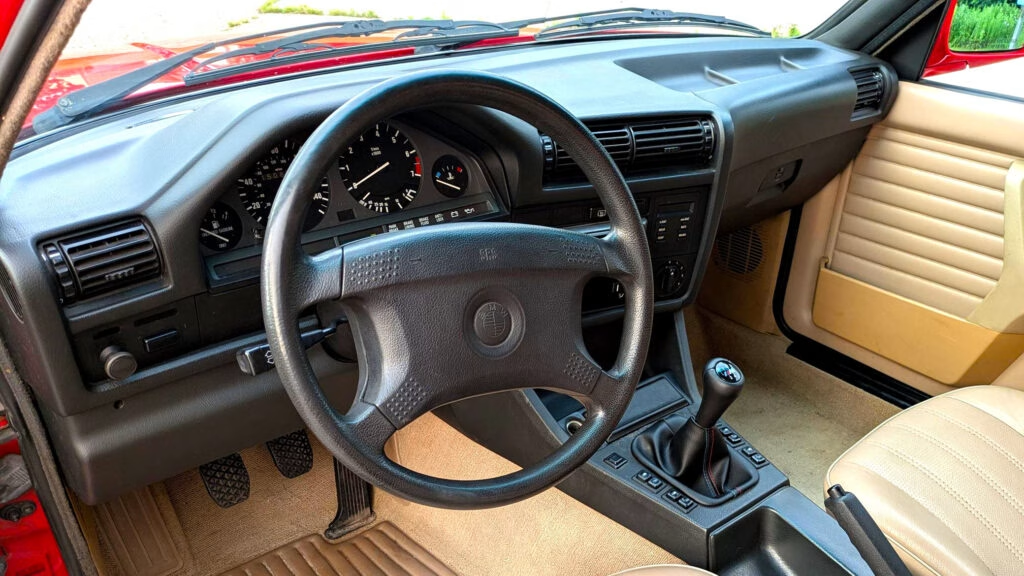What Should You Know Before Buying a 1991 BMW 318i as Your First Classic?
If you’re eyeing a 1991 BMW 318i as your ticket into the world of classic European cars, you’re not alone. These older 3-Series sedans have a reputation for being approachable, fun, and relatively affordable compared to their more collectible siblings. But what’s the real story when you find one with nearly 151,000 miles on the clock and a few battle scars? Let’s dig into what makes this car tick—and what you should watch out for.
How Does the Original Engine and Manual Transmission Hold Up After Decades?
The heart of this 318i is its original 1.8-liter four-cylinder engine, paired with a five-speed manual transmission. Back in the day, this setup delivered a modest 134 horsepower and 127 lb-ft of torque—numbers that won’t set your hair on fire, but in a car this light, they’re enough to keep things lively. The M42 engine, which replaced the less powerful M40 in North America, is generally regarded as robust if maintained properly.
With nearly a quarter-million kilometers under its belt, though, expect some quirks. This particular car reportedly has a ticking noise from the valve lifters and a minor oil leak. While those issues aren’t uncommon for high-mileage BMWs of this era, they’re not to be ignored. Valve lifter noise can sometimes be resolved with an oil change and the right additive, but persistent ticking may require a more involved (and costly) fix. Oil leaks, meanwhile, are almost a rite of passage for classic BMWs—think of it as the car marking its territory. Still, it’s wise to budget for new gaskets or seals.
Is the Interior Really as Good as It Looks?
Surprisingly, yes. The interior on this example has held up better than you might expect. Aside from a cracked dashboard—a common flaw in older BMWs exposed to sun—the seats and plastics look remarkably well-preserved. That’s a good sign, since sourcing original interior parts for E30s (the chassis code for this generation) can be time-consuming and expensive.
A few tasteful upgrades have been added, like projector headlights, a short shifter, and a modern Pioneer head unit. These tweaks can make daily driving more enjoyable without detracting from the car’s vintage charm. Just keep in mind that the air conditioning isn’t working, so if you live somewhere hot, factor in the cost of repairs or prepare to roll down the windows and embrace the breeze.
What’s the Real Story Behind the Paint and Bodywork?
From a distance, the Brilliant Red paint on this 318i pops. Get closer, though, and you’ll spot scratches, chips, and a few patches of rust lurking beneath the surface. Some lower body panels have been hit with primer but not finished with matching paint. This isn’t unusual for a car that’s been driven and enjoyed rather than tucked away in a garage.
Rust is the real enemy here. According to a 2023 report by Hagerty, rust repair is one of the most significant costs facing classic BMW owners, especially in climates where road salt is common. Before you buy, check the wheel arches, rocker panels, and floor pans for corrosion. If you’re handy with a welder, you might see this as an opportunity. If not, get a quote from a reputable body shop before making any offers.
Are There Any Mechanical Red Flags to Watch For?
Beyond the engine’s ticking and oil leak, the front suspension on this car needs attention. Worn bushings, ball joints, and shocks are par for the course on a 30-year-old BMW, and the E30’s suspension design means these parts are relatively straightforward to replace. Still, factor in the cost of a full front-end refresh—parts and labor can add up quickly if you’re not doing the work yourself.
The good news? The E30 community is massive, and there’s a wealth of DIY guides, forums, and YouTube tutorials to help you tackle most repairs. Replacement parts are still widely available, and many are surprisingly affordable compared to newer BMWs.
How Does This 318i Compare to Other Entry-Level Classics?
The E30-generation 3-Series has become a darling of the classic car world, but prices for pristine examples—especially coupes and convertibles—have skyrocketed in recent years. Sedans like this 318i, especially with higher mileage and a few cosmetic flaws, remain within reach for enthusiasts on a budget. According to Classic.com, average prices for driver-quality E30 sedans have risen about 20% since 2020, but bargains can still be found if you’re willing to put in some elbow grease.
Compared to other entry-level classics like the Mercedes-Benz 190E or Volvo 240, the BMW offers a sportier driving experience and a more connected feel, thanks in part to its rear-wheel-drive layout and manual gearbox. It’s not the fastest, but it’s arguably the most engaging to drive.
What’s the Real Cost of Bringing One of These Back to Glory?
Let’s be honest: buying a classic car is rarely about saving money. It’s about the experience, the nostalgia, and the satisfaction of bringing something old back to life. For this 318i, you’ll want to budget for mechanical repairs (engine, suspension, A/C), paint and rust work, and maybe a few interior touch-ups. If you’re handy, you can keep costs down; if you’re relying on shops, expect to invest a few thousand dollars on top of the purchase price.
But here’s the thing—these cars reward the effort. There’s a reason the E30 has a cult following. Once sorted, they’re reliable, easy to maintain, and a joy to drive. Plus, you’ll be part of a global community of enthusiasts who are always willing to lend advice or a spare part.
The big takeaway? Owning a classic BMW 318i isn’t about perfection—it’s about smarter adjustments. Start with one change this week, and you’ll likely spot the difference by month’s end. That’s how these cars win you over: one satisfying fix at a time.

